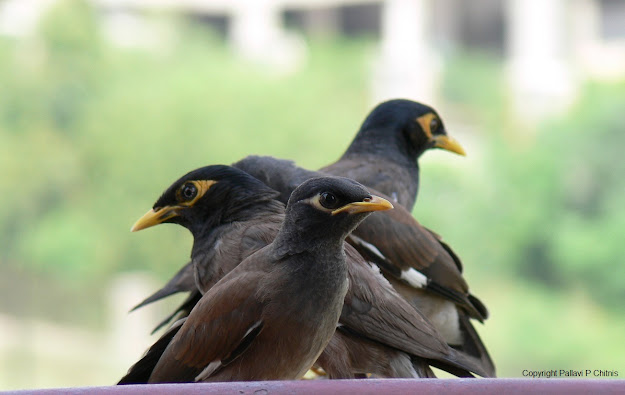This is the story of a pair pigeons who made home a corner of the balcony at my place. I never thought the eggs will ever hatch if they escaped the evil eyes of crows around, but they were meant to survive. All was well till an unfortunate incident united us with the pigeon family in their agony...

I had thought the eggs will fall prey to one of the crows around. Pleasantly, one fine morning, I discovered the poor helpless chicks out in open. I really felt bad for them. Dunno why the mother pigeon could not find a safer place....

Things in a larger perspective. That pot in the upper rack in the corner is the home to the chicks. Thats where the eggs were laid. I know you are amazed too. The mother pigeon would fly to neighborhood every time we went to balcony. She trusted us completely or was just helpless...

Chicks are growing....

Still growing, day by day....

Could finally catch them with mom.
My bai had already started complaining about the mess they were creating everyday :)

Soon they will outgrow the pot. Probably they have already. Look at the mess around...

Closer. That makes them attentive...

Here they are in their teens. When we are not looking the whole balcony is their playground and now they have their personal pots to sit. Huddled together for the click...
The youth, cant tell them from parents in one glance.
Venturing unknown territories..

They are no more afraid of us. Well, cant say that, they can hardly fly.
Tragedy struck!!! The chicks were attacked by an eagle ;( One fell victim to it, the other literally knocked on the door to let it in the house.
Here we see the mother pigeon. She could not find the chicks at the usual place. She sensed something wrong happened in the balcony, wont dare coming there. Just waiting somewhere near by.
Waiting for the chicks to appear...
The remains of the fight put up...
The refugee. He spent the whole night there.



































